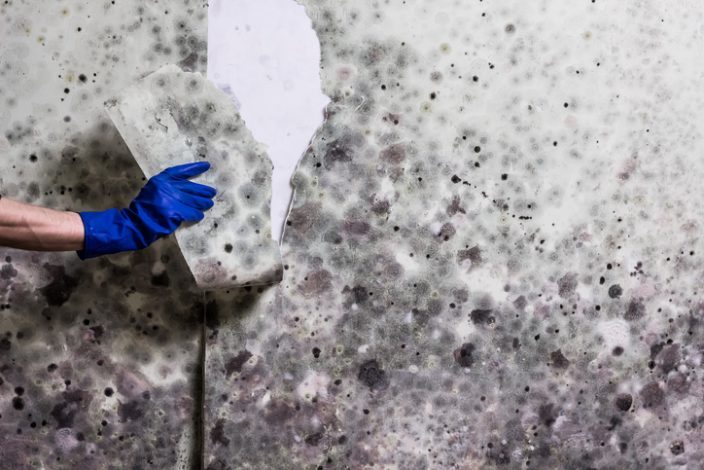Comprehensive Post Mold Remediation Procedures
Comprehensive Post Mold Remediation Procedures
Blog Article
Specialist Tips for Blog Post Mold Remediation Success
In the world of mold and mildew remediation, successfully getting rid of mold is only half the battle; the true obstacle lies in stopping its reappearance. By adhering to skilled ideas and ideal practices, individuals can secure their areas against mold resurgence and preserve a healthy and balanced interior atmosphere.
Display Moisture Levels On A Regular Basis
After finishing mold and mildew removal treatments, maintaining optimal moisture levels is essential to avoid mold re-growth and guarantee a healthy and balanced indoor atmosphere. High moisture degrees above 60% produce a favorable atmosphere for mold and mildew to prosper, making regular keeping an eye on a proactive action to protect against any kind of future mold issues.
Utilizing hygrometers or wetness meters can help in precisely measuring moisture levels in different locations of the home. These tools supply real-time information that makes it possible for remediation experts to make informed decisions regarding air flow, dehumidification, and various other essential actions to keep perfect humidity levels post-remediation. Additionally, establishing a regular timetable for humidity checks, especially in high-risk areas such as washrooms, basements, and kitchen areas, is an aggressive method to mold and mildew avoidance. By constantly monitoring humidity degrees, homeowner can effectively alleviate the danger of mold reoccurrence and preserve a healthy indoor setting post-remediation.
Conduct Thorough Inspections Post-Remediation
Following the conclusion of mold remediation procedures, it is critical to carry out detailed assessments to verify the effectiveness of the remediation process. These post-remediation assessments are essential in making certain that the mold issue has actually been effectively dealt with which there is no reoccurrence or remaining mold and mildew development. Inspections ought to be lugged out by qualified professionals who have proficiency in recognizing mold and mildew and analyzing indoor air high quality.
During these inspections, various approaches such as visual evaluations, air tasting, and surface tasting might be used to thoroughly examine the remediated locations. Visual assessments involve a thorough evaluation of the facilities to look for any visible indications of mold and mildew development or water damage. Air sampling assists in establishing the air-borne mold spore levels, while surface area tasting can discover mold and mildew fragments on surface areas.
Implement Correct Air Flow Approaches
After making sure the efficiency of the mold remediation procedure with extensive inspections, the next critical action is to concentrate on applying appropriate ventilation techniques. Appropriate air flow is vital in protecting against mold reoccurrence by regulating moisture levels and advertising air blood circulation.
Appropriate air flow not just help in stopping mold and mildew growth however likewise adds to the total health and convenience of occupants. By guaranteeing adequate ventilation throughout the property, you can reduce the risk of mold and mildew regrowth and develop a much healthier living environment.

Usage Mold-Resistant Products for Services
To boost the long-lasting effectiveness of mold removal initiatives, integrating mold-resistant materials over at this website for repairs is essential in alleviating the risk of future mold growth. Mold-resistant materials are made to endure dampness and inhibit mold and mildew growth, making them an important choice for locations susceptible to dampness and humidity. When fixing locations influenced by mold and mildew, making use of materials such as mold-resistant drywall, mold-resistant paints, and mold-resistant caulking can aid protect against mold and mildew reoccurrence.
Mold-resistant drywall is an outstanding option to conventional drywall in locations like washrooms and basements where wetness degrees are greater. When exposed to damp problems, this type of drywall has a special coating that stands up to mold growth even. Additionally, making use of mold-resistant paints containing antimicrobial representatives can additionally inhibit mold and mildew growth on ceilings and walls.
In areas where wetness prevails, such as bathroom and kitchens, making use of mold-resistant caulking around home windows, sinks, and tubs can help seal out water and prevent mold from holding in fractures and gaps. By investing in these mold-resistant materials during repair services post-remediation, you can significantly decrease the chance of future mold issues and keep a much healthier interior atmosphere.
Maintain Cleanliness and Address Water Issues
After mold and mildew remediation, it is important to maintain a clean environment to protect against the regrowth of mold and mildew. Leakages, water breach, or high humidity degrees can produce the ideal reproduction ground for mold, so it is essential to repair any type of water-related troubles promptly.
To maintain tidiness, think about using HEPA filters in vacuum cleaners and air cleansers to trap mold and mildew spores remove mold mildew carpet and stop their circulation airborne. Moreover, making sure correct air flow in areas susceptible to moisture accumulation, such as kitchens and shower rooms, can help maintain moisture degrees in check. By remaining alert regarding tidiness and attending to water problems immediately, you can efficiently protect against mold reinfestation and maintain a healthy indoor environment.
Conclusion

In the realm of mold removal, efficiently removing mold is only half the fight; the real challenge lies in read review preventing its reappearance. After completing mold remediation treatments, keeping optimum humidity degrees is important to stop mold re-growth and make certain a healthy interior setting. High moisture levels above 60% create a favorable atmosphere for mold and mildew to grow, making normal keeping an eye on an aggressive action to prevent any future mold issues.
To improve the long-lasting efficiency of mold and mildew removal initiatives, incorporating mold-resistant materials for repair services is important in reducing the threat of future mold and mildew development. After mold removal, it is essential to maintain a clean atmosphere to protect against the regrowth of mold.
Report this page